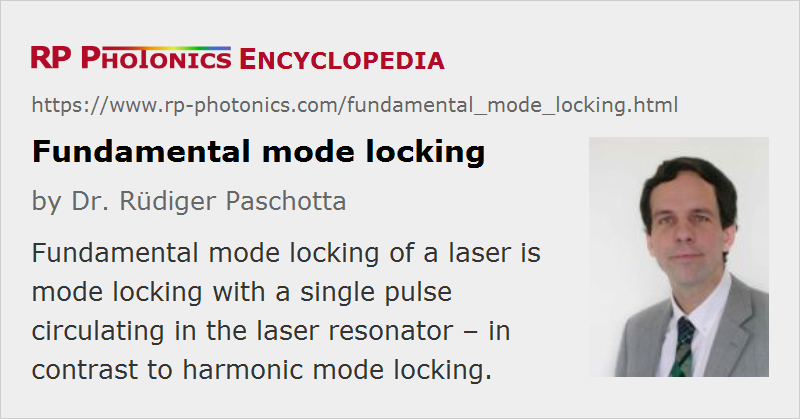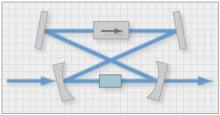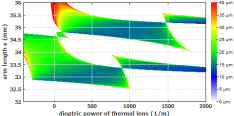Fundamental Mode Locking
Definition: mode locking with a single pulse circulating in the laser resonator
More general term: mode locking
Opposite term: harmonic mode locking
German: fundamentales Modenkoppeln
How to cite the article; suggest additional literature
Author: Dr. Rüdiger Paschotta
Fundamental mode locking is mode locking of a laser with a single pulse circulating in the laser resonator. The converse term is harmonic mode locking, with multiple pulses in the resonator. Advantages of fundamental mode locking are that possible instabilities of harmonic mode locking are avoided, and that the laser setup is usually more compact. On the other hand, harmonically mode-locked lasers have a potential for lower laser noise.
In the pulse repetition rate regime of many gigahertz, as often required for optical data transmission, fundamental mode locking requires a fairly short laser resonator. This can be achieved e.g. with monolithic diode lasers, which compete with harmonically mode-locked external-cavity diode lasers and fiber lasers.
For passively mode-locked bulk lasers, an additional challenge for fundamental mode locking with high repetition rates is the tendency for Q-switching instabilities. Nevertheless, such lasers have been developed which can be operated at pulse repetition rates of tens of gigahertz or even up to 160 GHz [3].
Questions and Comments from Users
Here you can submit questions and comments. As far as they get accepted by the author, they will appear above this paragraph together with the author’s answer. The author will decide on acceptance based on certain criteria. Essentially, the issue must be of sufficiently broad interest.
Please do not enter personal data here; we would otherwise delete it soon. (See also our privacy declaration.) If you wish to receive personal feedback or consultancy from the author, please contact him e.g. via e-mail.
By submitting the information, you give your consent to the potential publication of your inputs on our website according to our rules. (If you later retract your consent, we will delete those inputs.) As your inputs are first reviewed by the author, they may be published with some delay.
Bibliography
| [1] | R. S. Tucker et al., “40 GHz active mode-locking in a 1.5 μm monolithic extended-cavity laser”, Electron. Lett. 25 (10), 621 (1989), doi:10.1049/el:19890421 |
| [2] | K. Sato et al., “High-frequency and low-jitter optical pulse generation using semiconductor mode-locked lasers”, IEEE Transactions on Microwave Theory and Techniques 47 (7), 1251 (1999), doi:10.1109/22.775464 |
| [3] | L. Krainer et al., “Compact Nd:YVO4 lasers with pulse repetition rates up to 160 GHz”, IEEE J. Quantum Electron. 38 (10), 1331 (2002), doi:10.1109/JQE.2002.802967 |
| [4] | S. C. Zeller et al., “Passively mode-locked 50-GHz Er:Yb:glass laser”, Electron. Lett. 40 (14), 875 (2004) |
| [5] | L. A. Jiang et al., “Semiconductor mode-locked lasers as pulse sources for high bit rate data transmission”, J. Opt. Fiber Commun. Rep. 2, 1 (2005), doi:10.1007/s10297-004-0022-0 |
See also: mode locking, harmonic mode locking, pulse repetition rate
and other articles in the category light pulses
 |













If you like this page, please share the link with your friends and colleagues, e.g. via social media:
These sharing buttons are implemented in a privacy-friendly way!